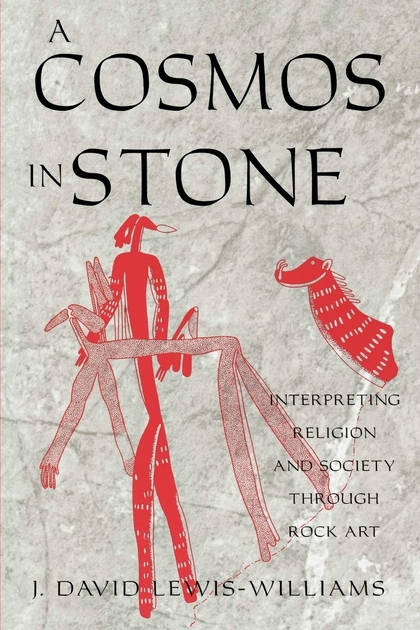
Supernatural Recommended Reading
0
likes

African Rock Art
The African landscape is littered with information about its prehistoric inhabitants, no more so than in its broad range of rock art. This large book forms one of the best and most comprehensive illustrated guides to the art containing almost 400 colour photographs and line drawings. Detailed discussions of the African land and its people, of the different styles, subjects and dating of the art, and the sites themselves, are followed by a regional study of examples. Includes stunning photographs of some of the most precious, and most threatened, art images in the world.
See all

Journey Through the Ice Age
Some of the oldest art in the world is the subject of this riveting and beautiful book. Paul Bahn and Jean Vertut explore carved objects and wall art discoveries from the Ice Age, covering the period from 300,000 B.P. to 10,000 B.P., and their collaboration marks a signal event for archaeologists and lay readers alike.Utilizing the most modern analytical techniques in archaeology, Bahn presents new accounts of Russian caves only recently opened to foreign specialists; the latest discoveries from China and Brazil; European cave finds at Cosquer, Chauvet, and Covaciella; and the recently discovered sites in Australia. He also studies sites in Africa, India, and the Far East. Included are the only photographic images of many caves that are now closed to protect their fragile environments. A separate chapter in the book examines art fakes and forgeries and relates how such deceptions have been exposed.The beliefs and preoccupations of Paleolithic peoples resonate throughout this book: the importance of the hunt and the magic and shamanism surrounding it, the recording of the seasons, the rituals of sex and fertility, the cosmology and associated myths. Yet enigmas and mysteries emerge as well, particularly as new analytical techniques raise new questions and cast doubt on our earlier suppositions.A comprehensive, up-to-date analysis of all that has been discovered about Ice Age art, Bahn and Vertut's book offers a visually rich link with the past. Some of the oldest art in the world is the subject of this riveting and beautiful book. Paul Bahn and Jean Vertut explore carved objects and wall art discoveries from the Ice Age, covering the period from 300,000 B.P. to 10,000 B.P., and their collaboration marks a signal event for archaeologists and lay readers alike.Utilizing the most modern analytical techniques in archaeology, Bahn presents new accounts of Russian caves only recently opened to foreign specialists; the latest discoveries from China and Brazil; European cave finds at Cosquer, Chauvet, and Covaciella; and the recently discovered sites in Australia. He also studies sites in Africa, India, and the Far East. Included are the only photographic images of many caves that are now closed to protect their fragile environments. A separate chapter in the book examines art fakes and forgeries and relates how such deceptions have been exposed.The beliefs and preoccupations of Paleolithic peoples resonate throughout this book: the importance of the hunt and the magic and shamanism surrounding it, the recording of the seasons, the rituals of sex and fertility, the cosmology and associated myths. Yet enigmas and mysteries emerge as well, particularly as new analytical techniques raise new questions and cast doubt on our earlier suppositions.A comprehensive, up-to-date analysis of all that has been discovered about Ice Age art, Bahn and Vertut's book offers a visually rich link with the past.
See all
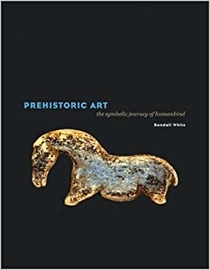
Prehistoric Art
"In Prehistoric Art: The Symbolic Journey of Humankind, anthropologist Randall White presents a survey of prehistoric objects and images from around the world, from the first dramatic explosion of symbolic representation that occurred approximately 40,000 years ago, to the creations of peoples whose lives and outlook remained untouched by modern civilization as recently as the early twentieth century. White interprets these objects and images in an entirely new light. Rather than approaching them as "works of art," he asks readers to look at them from the perspective of an anthropologist. He asks us, in fact, to distance ourselves from the idea of "art" as we use the term today, and instead to see these images and objects as the creations of men and women from a number of very different societies, some of which modern scholars know a great deal about, and others about which we know very little. Drawing on the most recent research of anthropologists working in Europe, Africa, Australia, and the Americas, White places these discoveries in context, discussing the possible uses and meaning of the works, which make up one of the most fascinating and misunderstood areas of human achievement." "Lavishly illustrated with new photographs of prehistoric paintings, drawings, and artifacts from around the world, this book is an essential source for scholars, and at the same time a fascinating introduction to the astonishing heritage of human creation."--BOOK JACKET.
See all

Cave Beneath the Sea
In 1991, a professional diver named Henri Cosquer discovered a wealth of prehistoric art in a cave near Marseilles, France. The opening to the cave, once several miles inland from the Mediterranean, became submerged when the sea began to rise at the end of the last ice age, about 12,000 years ago. Since that time, no human had entered this deep cavern or seen the paintings and engravings of animals, human hands, and signs that cover the walls and ceilings until Cosquer swam cautiously up the flooded entrance passage.News of Cosquer's extraordinary find flashed around the world. The French Ministry of Culture immediately sent two eminent archaeologists, Jean Clottes and Jean Courtin, to study the cave. Assisted by teams of specialists, they carried out two diving missions to the site, in 1991 and 1992. This book describes what they found and provides the first complete photographic documentation of this incredible site, one of the major decorated caves of Europe.Because charcoal and charcoal pigment were found in such abundance at the site, and because the archaeological context was undisturbed, Cosquer is now one of the most thoroughly and firmly dated Paleolithic caves in the world. Thanks to a series of twelve radiocarbon dates, we know that the images at Cosquer were made during two different eras. The stenciled hands are extremely ancient, created about 27,000 years ago. The land animals - cold-loving plains horses, ibex, chamois, aurochs, and the huge ice-age deer called megaloceros - are some 18,500 years old. There are also marine animals, very unusual subjects in Paleolithic art: they include seals, great auks (penguin-like birds that are now extinct), and mysterious images that may represent fish and jellyfish.Throughout this fascinating book, which includes notes, a full bibliography, and a glossary of 125 key terms, the Cosquer cave is discussed in relation to other prehistoric decorated caves in Europe. The authors judiciously speculate on the meaning of the ancient images and what they can tell us not only about the lost world of our remote ancestors but about the origins of mythmaking, symboling, and artmaking - in other words, of being truly human.
See all
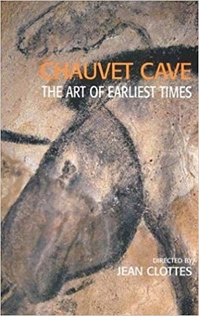
Return to Chauvet Cave
The discovery of the Chauvet Cave in December 1994 was a remarkable event. The incredible age of the paintings, which dated back 35,000 years, and their exceptionally high quality were the source of both astonishment and admiration, and the images of mammoths, rhinoceroses, lions, bears, horses and bison have since been seen around the world.
See all

San Spirituality
At the intersection between western culture and Africa, we find the San people of the Kalahari desert. Once called Bushmen, the San have survived many characterizations_from pre-human animals by the early European colonials, to aboriginal conservationists in perfect harmony with nature by recent New Age adherents. Neither caricature does justice to the complex world view of the San. Eminent anthropologists David Lewis-Williams and David Pearce present instead a balanced view of the spiritual life of this much-studied people, examining the interplay of their cosmology, myth, ritual, and art. Integrating archaeological finds, historical accounts, ethnographic information, and interpretation of rock art, the authors discuss San cosmic geography, the role of shamans and mind-altering substances, the ritual of the trance dance, the legends reproduced on stone, and other intriguing accounts of other-worldly experiences. From this, Lewis-Williams and Pearce illuminate the world view of the San, how it plays out in their society, and how it has been challenged and altered by the modern world. For students of anthropology, archaeology, religion, and African studies, this volume will be essential and fascinating reading.
See all
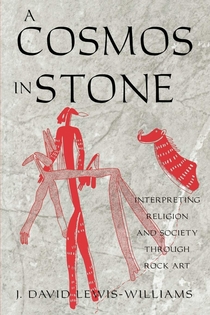
A Cosmos in Stone
J. David Lewis-Williams is world renowned for his work on the rock art of Southern Africa. In this volume, Lewis-Williams describes the key steps in his evolving journey to understand these images painted on stone. He describes the development of technical methods of interpreting rock paintings of the 1970s, shows how a growing understanding of San mythology, cosmology, and ethnography helped decode the complex paintings, and traces the development of neuropsychological models for understanding the relationship between belief systems and rock art. The author then applies his theories to the famous rock paintings of prehistoric Western Europe in an attempt to develop a comprehensive theory of rock art. For students of rock art, archaeology, ethnography, comparative religion, and art history, Lewis-Williams' book will be a provocative read and an important reference.
See all
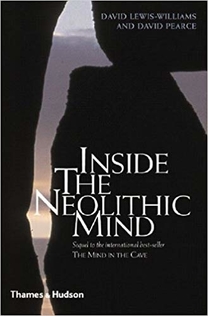
Inside the Neolithic Mind
Now in compactpaperback, a compellingexamination of how brainstructure and culturalcontext interacted inthe Neolithic period,10,000 years ago, toproduce unique patternsin belief systems. What do the headless figures found in the famous paintings at Catalhoyuk in Turkey have in common with the interlinked spirals carved on the monumental tombs at Newgrange and Knowth in Ireland? How can the concepts of "birth," "death," and "wild" cast light on the changes in relationships between people and animals? In the new compact paperback version of Inside the Neolithic Mind, David Lewis-Williams and David Pearce examine the intricate web of belief, myth, and society in the Neolithic period, arguably the most significant turning point in human history, when agriculture became a way of life and the fractious society that we know today was born. The authors focus on two contrasting times and places: the beginnings in the Near East, and Western Europe. They argue that neurological patterns hardwired into the brain help explain the nature of the art, religion, and society that Neolithic people produced. In proposing provocative new theories about religious motivation in ancient times, they create a fascinating neurological bridge to the mysterious thought-lives of the past and reveal the essence of a momentous period in human history.
See all
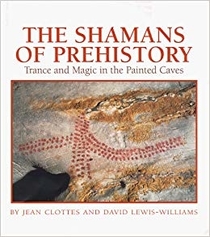
The Shamans of Prehistory
This startling book reveals a new way of understanding the remarkable images painted or etched on rock walls by the people of prehistory.Noting the similarity of prehistoric rock art with that created by some contemporary traditional societies, archaeologists Jean Clottes and David Lewis-Williams suggest that the ancient images were created by shamans, powerful individuals who were able to contact the spirit world through trance and ritual. In many societies throughout history, shamans have been consulted to try to change the weather, foretell the future, control the movements of animals, and converse with the dead.With an abundance of full-color illustrations, Clottes and Lewis-Williams draw on neuropsychology and ethnography to follow prehistoric shamans into their trance states. The authors shed light on what these rock artists were thinking and how they may have worked. On these pages, Paleolithic art and life are seen in a new and astonishing way.
See all
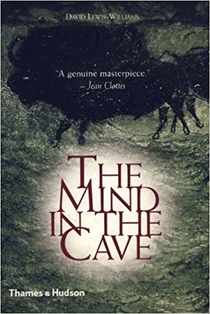
The Mind in the Cave
The author combines a lifetime of anthropological research with the most recent neurological insights in this text. Illuminating glimpses into the ancient mind are interwoven with the self-evolving story of modern-day cave discoveries & research.






